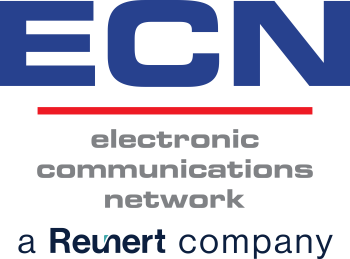John Holdsworth – 19 August 2009 ECN legally challenge high interconnect rates in attempt to reducing telecoms costs in South Africa
South Africa’s telecommunications costs are among the highest in the world. ECN is committed to strategy aimed at reducing telecommunications costs. The primary reason for such high telecommunications costs is interconnection charges – the charge levied to terminate a call on another network. Mobile interconnect charges generate billions of rands in revenue for the mobile network operators and while the industry regulator, ICASA, is deciding on what approach to take to tackle the problem, the consumer is ultimately losing out. In summary:
- High interconnection charges prevent new operators from entering the telecommunications market and discourage consumers from changing to new operators.
- Mobile interconnection charges cost more than 5 times that of fixed-line interconnection fees (calls to landlines).
- The current mobile termination rates cost consumers up to 80% of the price per minute from a landline to a cell phone.
- High interconnect charges create an ‘artificial price floor’ that keeps consumer prices high, because charging less than the interconnect fee is not feasible.
- Excessive mobile termination rates stop many people from using cell phones freely and they stop landline customers from calling cell phones.
Removing over-inflated mobile interconnection charges would enable new entrants like ECN to offer its customers groundbreaking deals the kind of which have never been seen before in South Africa. Without high interconnection charges it would be possible for example to offer fixed-price bundles offering ‘all-you-can-eat’ unlimited calls from landlines, which would include calls to cell phones on all SA mobile networks.
Recently, in the interests of educating government and consumers about the true cost of terminating calls, ECN distributed a Namibian benchmarking study that shows that the true cost of interconnection, based on the performance of an efficient operator, should be R0.25. Vodacom, MTN and Cell C charge operators such as ECN R1.25 in peak hours.
The Electronic Communications Act obliges electronic communications licensees to interconnect with one another. ICASA is obliged in terms of section 38 of the ECA to publish regulations that facilitate the conclusion of interconnection agreements. ICASA has published draft regulations but although they deal with the content of interconnection agreements they sorely lack any detail on interconnection pricing. Section 41 of the ECA permits ICASA to prescribe regulations establishing a framework for wholesale interconnection rates to be charged for interconnection services.
ECN is aware that ICASA has interpreted the Electronic Communications Act to mean that it may not introduce price interconnection regulations until such time as it has concluded the so-called “Chapter 10” process which includes defining markets and market segments which have ineffective competition and within which pro-competitive measures may be imposed on licensees with significant market power. It seems that ICASA is of the view that it can only regulate interconnection rates as a pro-competitive remedy imposed in an inefficient market segment.
Conducting a market study is a complex and lengthy exercise and ECN is not satisfied with ICASA’s interpretation particularly as it is sure that any conclusions drawn by ICASA as a result of the market study will be challenged by established operators – this will push out the date upon which interconnection rates (on ICASA’s interpretation) will be regulated.
ECN therefore put the issue of whether or not interconnection rates can be regulated in the absence of a market study to Senior Counsel. Advocate Gilbert Marcus SC and his junior, Advocate Isabel Goodman, have given an opinion that the interconnection provisions of the ECA authorize ICASA to impose interconnection rates without adhering to the stricter regime imposed by Chapter 10. ICASA can regulate interconnection rates prior to defining markets and market segments. This means that ICASA can act immediately to address high interconnection rates by prescribing regulations.
In determining the regulations ICASA will be obliged to have regard to all relevant factors. These could potentially include international practice and benchmarking studies such as the recent Namibian Benchmarking study.
In addition Counsel advised ECN that the Minister may also intervene immediately in the regulation of the telecommunications industry in order to lower interconnection rates. The ECA allows the Minister to issue a policy directive calling on ICASA to undertake an inquiry into lowering interconnection rates and to report to the Minister, or to consider urgently the issue of interconnection pricing.
The DoC, ICASA and the mobile network providers have a great opportunity to make massive cuts to the cost of phone bills in South Africa. By agreeing on a lower and more accurate interconnect charge consumers would get a fairer deal and not pay over the odds for a charge that many of them aren’t even aware exists.” says John Holdsworth, CEO of ECN.
ECN has made a copy of Counsels’ opinion available to ICASA and the Department of Communications and hopes that immediate action will be taken on the strength of the opinion to lower interconnect rates;” concludes Holdsworth.
